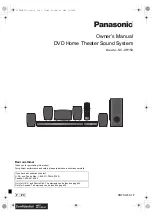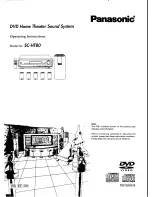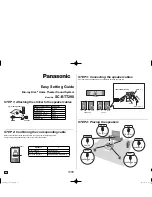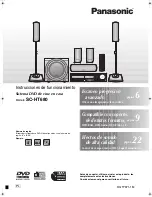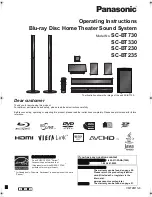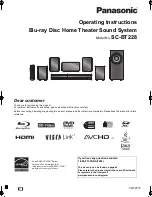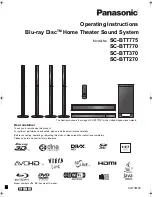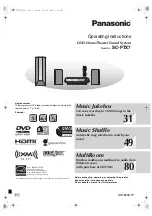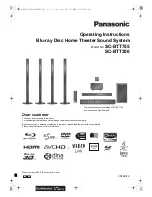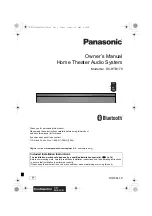
07
Cliprail Zone Pack
06
Cliprail Zone Pack
6.0 Risk Assessment for Screed Application
General
Construction sites have a number of general risks associated
with them and these should be detailed in the main contractors
site Health and Safety policy or Risk Assessment. Any special
risks with a particular site should highlighted.
The use of hard hats, high visibility jackets and safety boots is
normal practice for all installation operatives. Where necessary,
ear protection and goggles will be worn during the use of
certain items of plant and equipment.
Installation of MYSON FLOORTEC underfloor heating systems
do not significantly add to these risks and normally applied
safety actions by other contractors on site should be
satisfactory.
Underfloor Heating Installation
The following is a detailed examination of each stage of the
installation of MYSON underfloor heating. MYSON underfloor
heating method statements are used as a reference (copies
available from MYSON). Risks associated with each stage of the
installation are detailed and the appropriate actions to limit any
risk are given.
Fitting of Control System
The manifold is made up and then fixed to a wall or temporary
structure using wall plugs and screws.
Tools:
Power drill/cordless power drill, screw driver,
spanners/pipe wrench
Risk:
With power tools there is always the risk of ‘flying
chips’. Due to the exposed nature of some sites and the
presence of other trades there is an increased risk of
electrocution from trailing cables and the like.
Action:
Safety glasses are to be worn whilst drilling issued
under PPE. See electrical section for use of electrical
equipment.
Fitting Pipe to Control System
Pipework is cut and fitted to the manifold using a mechanical
joint.
Tools:
Pipe cutters.
Risk:
No significant risk.
Laying of Pipe
Pipe is decoiled and fixed to the insulation by means of a
plastic clip.
Risk:
Pipe coils are heavy and must be considered under
manual handling. Coils are available in 120m and 240m
lengths. Both the 120m and 240m can be utilised without
mechanical assistance.
No other significant risks.
Action:
Operatives should be trained in manual handling.
Filling and Pressure Testing
Hydraulic Pressure Test to be Used on Site
The underfloor heating system should be filled with mains
potable water. A suitable hydraulic pressure pump may be
required.
Tools:
Hydraulic pressure pump, Spanners/Pipe wrench.
Risk:
Use of hydraulic pressure tests has a medium risk,
however the following procedure must be followed:
(i)
Ensure the area to be tested is cordoned off and that
no other site personnel are able to readily access the
area signage to be erected.
(ii)
Whilst filling the system check for leaks.
(iii)
Gradually raise the pressure to a maximum 3bar.
Check for leaks at all joints and mechanical fittings.
(iv)
Re-check that all other site personnel are kept clear of
the test area.
(v)
Leave pressurised for 2 hours to check for leaks. There
may be a small drop in pressure initially due to the pipe
work relaxing/temperature
(vi)
After 2 hours the pressure should be released to 1 bar
gauge, which should be held during concreting.
COSHH Assessment
The installation of MYSON underfloor heating does not involve
the use of any substances as defined by the ‘Control of
Substances Hazardous to Health’ regulations.
4.0 Installation
(continued...)
5.0 Post Screeding
The slab must be allowed to cure for a minimum of 21 days
before the heating system can be turned on. Following this
period the heating system should be allowed to reach
operating temperature by increasing the temperature 3ºC per
day from a commencing temperature of 30ºC until the final
operating temperature is reached. Failure to observe these
instructions could result in damage to the screed.
Floor Coverings
Underfloor heating doesn’t dictate to you in any way. It can be
used with almost any kind of flooring or floor covering.
There are four basic floor finish types which should be
considered: ceramic tiles, vinyl, timber and carpets. Ceramic
finished has the least thermal resistance with carpets having the
greatest.
Ceramic & Vinyl:
Ceramic, plastic or vinyl flooring, have a low
thermal resistance, and will function very well with MYSON
underfloor heating systems.
Timber:
Timber flooring is compatible with MYSON underfloor
heating systems however you must ensure that it is stored in
the room in which it is to be laid 2 weeks prior to installation.
Carpets:
Carpets are generally compatible with MYSON
underfloor heating systems however heavy carpets with felt
underlay should be avoided as this may reduce the heat output
in the floor.
l
Prove adhesion. Provide additional fixing of Cliprail by
securing each end using special plastic Cliprail pins.
Continue to butt-joint Cliprails in accordance with pipe
configuration requirements.
l
Holding the pipe coil in both arms walk backwards away
from the manifold, turning the coil whilst playing out the
pipe.
l
Walk along the pipe and ensure piping is spaced according
to the design drawing requirements. Insert the pipe into the
pre-formed slots of the Cliprail, ensuring “snap fit”.
Insert the pipe into Cliprail at the following spacings:
(a)
Straight runs - 1 per 3 metres
(b)
Bends - 1 at 300mm from bend
The maximum bend radius for PeX-a pipe is 8 x pipe
diameter i.e. 17 x 2mm pipe - 136mm radius
l
Additional “Anchor Clips” are provided to secure the pipe
during changes of direction. These red clips are screwed into
the insulation and provide a robust fixing where required.
l
Black pipe bend supports are placed where the pipe
direction changes from horizontal to vertical, under the
manifolds. These supports are designed to relieve stress on
the manifold connections and must be fitted.
6. PeX-a Pipe; Coupling Set
l
Gradually complete the layout of piping according to the
required configuration. Final pipe run should be returned to
the opposing flow or return connection as in (5) above.
7. PeX-a Pipe Length
l
PeX-a pipe is marked in metre lengths.
l
Note the pipe length marking at both flow and return
connections and record the length of each loop to ensure
the pipe in economically utilised.
8. Complete Steps 4 to 8 for Each Loop
9. Filling, Venting and Pressure Test
l
Attach a temporary mains water connection to the flow (red)
connection on the MYSON Underfloor Heating Compact
Control Unit, and connect a temporary drain connection to
the return (blue) connection. Open the isolating valves and
allow mains pressure water to enter the system. Run water
through the system until the drain water contains no air.
l
Close the return isolating valve and allow mains pressure to
raise the water pressure of the underfloor heating system to
3 bar. If the mains water pressure is inadequate, a separate
hydraulic pump may be utilised.
l
Close both isolating valves and leave the system pressure at
3 bar for 30 minutes. Check for any leaks and rectify if
necessary. Once system integrity has been proven, reduce
the pressure to 1 bar and prepare for screeding.
5.0
6.0
4.0
21522 Installation Manual_19755 Cliprail manual 20/01/2011 14:46 Page 7





